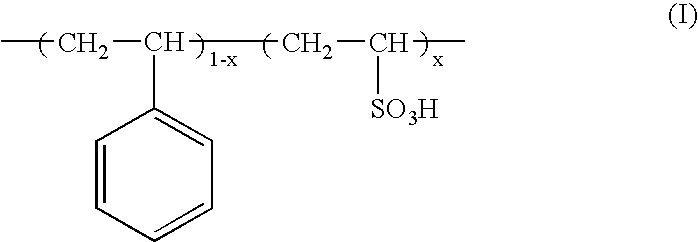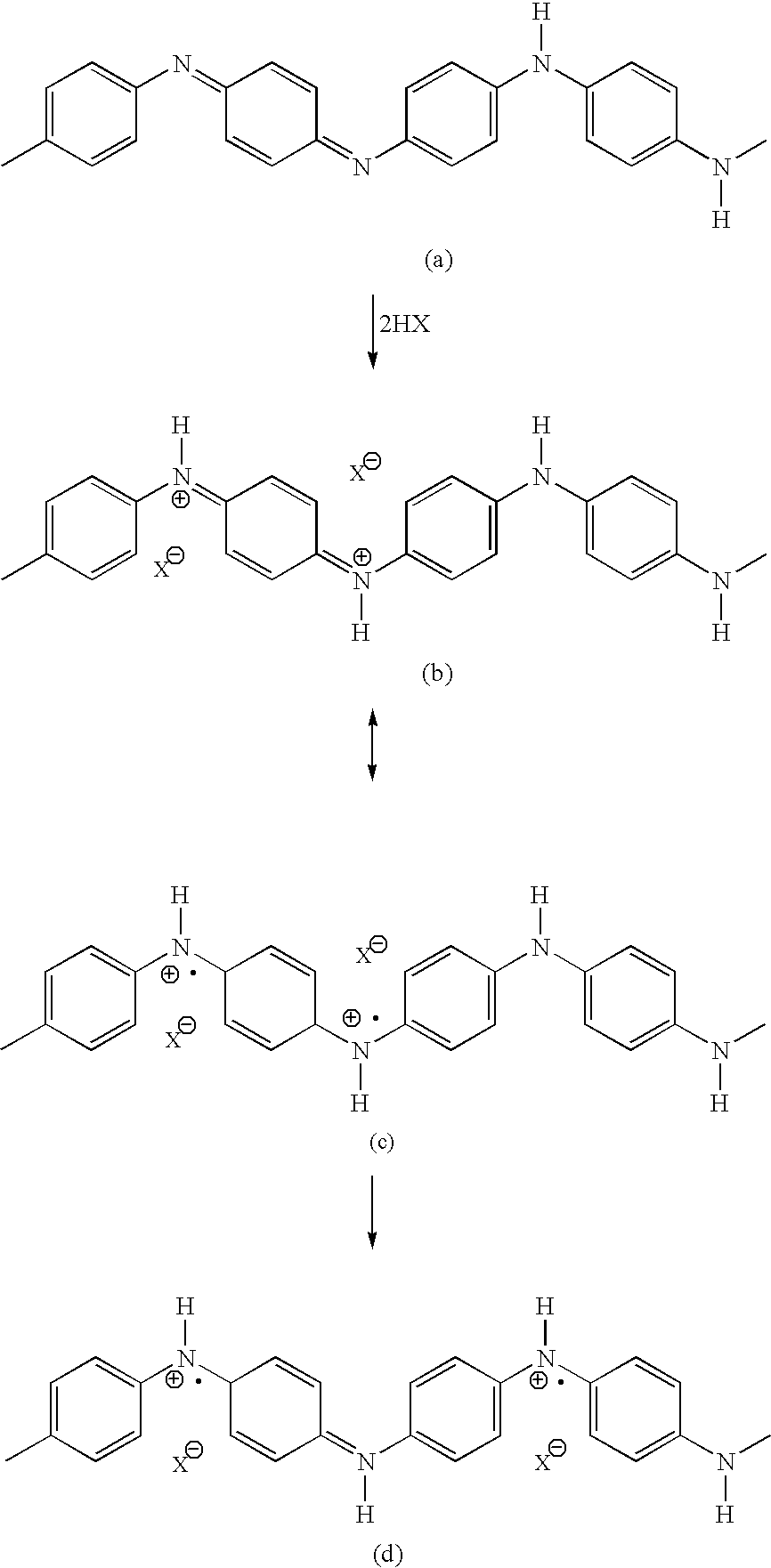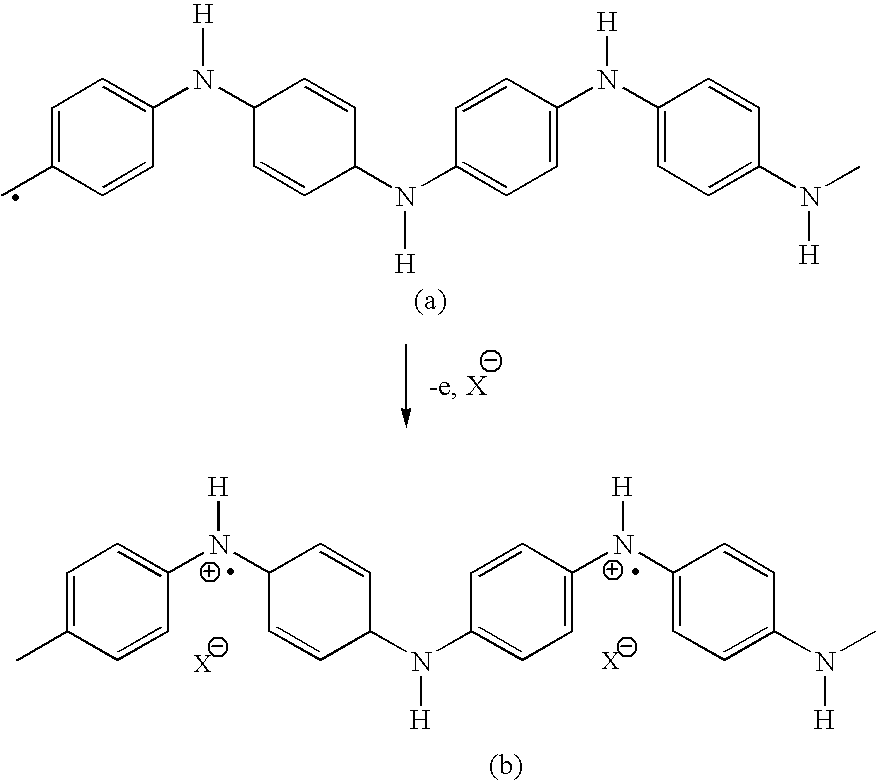Fuel cell
- Summary
- Abstract
- Description
- Claims
- Application Information
AI Technical Summary
Benefits of technology
Problems solved by technology
Method used
Image
Examples
example 1
[0053] In a mortar, 180 mg of electroconductive carbon black powder (EC-20-PTC, manufactured by ElectroChem, Inc., USA) on which platinum was carried in an amount of 20% by weight, 36 mg of electroconductive carbon black, 24 mg of polyvinylidene fluoride, and 940 mg of N-methyl-2-pyrrolidone were mixed to prepare a paste. A portion of this paste was applied onto one surface of a carbon paper 2.3 cm square (TGP-H-90, manufactured by Toray Industries, Inc., and having a film thickness of 260 μm), and heated at 80° C. for 60 minutes so as to be dried. In the thus prepared platinum-carried carbon paper, the amount of the carried solid contents was 20 mg. The amount of the carried platinum in the solid contents was 3 mg. Then, a 5% by weight alcohol solution (manufactured by Aldrich Co.) of a proton conductive ion exchange electrolytic polymer, Nafion® was applied onto the platinum-carried surface of this platinum-carried carbon paper, and heated at 80° C. for 30 minutes so as to be drie...
example 2
[0057] In a mortar, 120 mg of electroconductive carbon black powder (EC / 20 / 10-PT / RU, manufactured by ElectroChem, Inc., USA) on which a platinum-ruthenium alloy (ratio by weight of platinum / ruthenium: 2 / 1) was carried in an amount of 30% by weight, 96 mg of electroconductive carbon black, 24 mg of polyvinylidene fluoride, and 940 mg of N-methyl-2-pyrrolidone were pulverized and mixed to prepare a paste. A portion of this paste was applied onto one surface of a carbon paper 2.3 cm square, which was the same as in Example 1, and heated at 80° C. for 60 minutes so as to be dried. In the thus prepared platinum-ruthenium alloy carried carbon paper, the amount of the carried solid contents was 20 mg. The amount of the carried platinum-ruthenium alloy in the solid contents was 3 mg. Then, a 5% by weight alcohol solution (manufactured by Aldrich Co.) of a proton conductive ion exchange electrolytic polymer, Nafion® was applied onto this platinum-ruthenium alloy carried surface of the platin...
example 3
[0062] An anode having, on a carbon paper thereof, an electrode catalyst layer was yielded in the same way as in Example 2 except that a HiSPEC 10000 manufactured by Johnson Matthey Fuel Cells Japan Ltd. was used as the platinum-ruthenium alloy catalyst instead of the EC / 20 / 10-PT / RU manufactured by ElectroChem, Inc., USA and the 4M sulfuric acid treatment was not conducted.
[0063] This anode was immersed into a 2 N solution of polyvinylsulfonic acid in water in a laboratory dish, and then vacuum-impregnated, as it was, at room temperature in a vacuum drier. The vacuum degree was raised up to a degree such that air bubbles were generated from the whole of the anode surface. The anode was kept in this state for 1 minute. Thereafter, the vacuum degree of the vacuum drier was lowered so as to return the pressure into the atmospheric pressure. The system was left as it was for 12 hours, and then the anode was taken out. The polyvinylsulfonic acid adhering on the surface was removed by pu...
PUM
 Login to View More
Login to View More Abstract
Description
Claims
Application Information
 Login to View More
Login to View More - R&D
- Intellectual Property
- Life Sciences
- Materials
- Tech Scout
- Unparalleled Data Quality
- Higher Quality Content
- 60% Fewer Hallucinations
Browse by: Latest US Patents, China's latest patents, Technical Efficacy Thesaurus, Application Domain, Technology Topic, Popular Technical Reports.
© 2025 PatSnap. All rights reserved.Legal|Privacy policy|Modern Slavery Act Transparency Statement|Sitemap|About US| Contact US: help@patsnap.com



